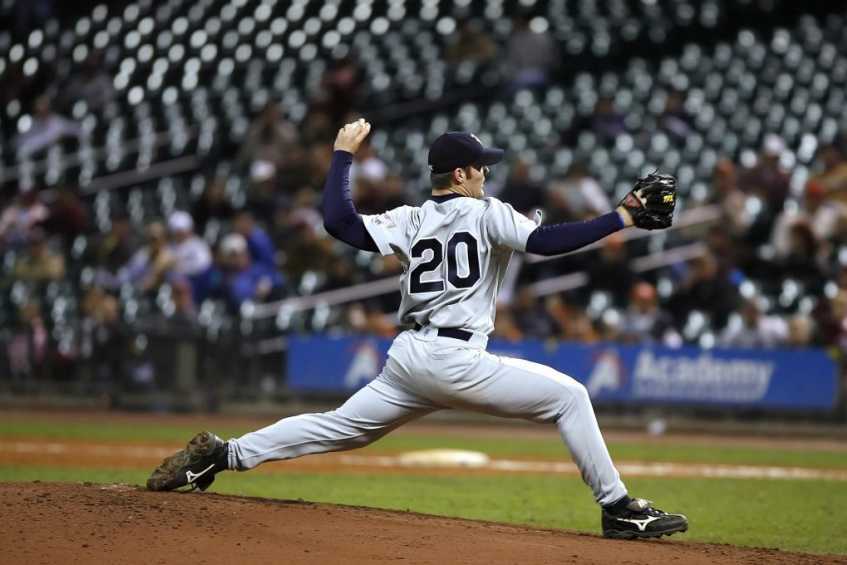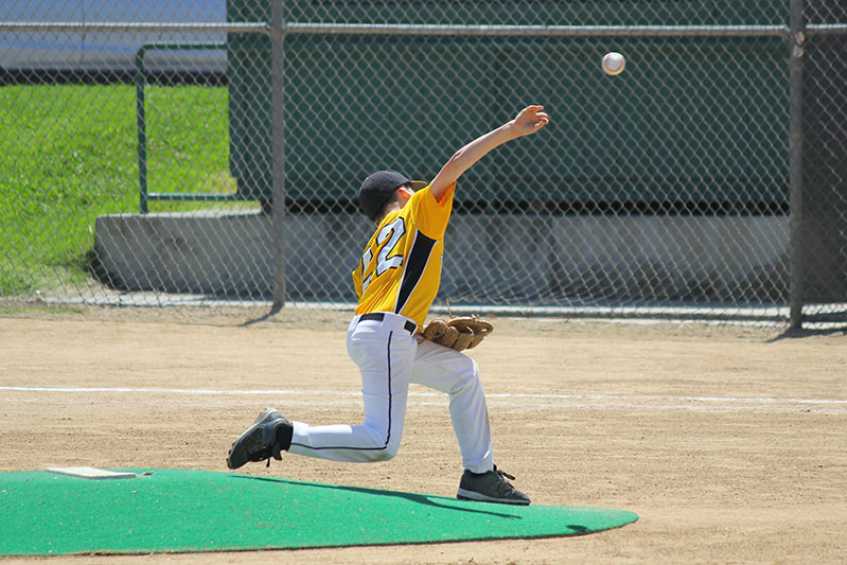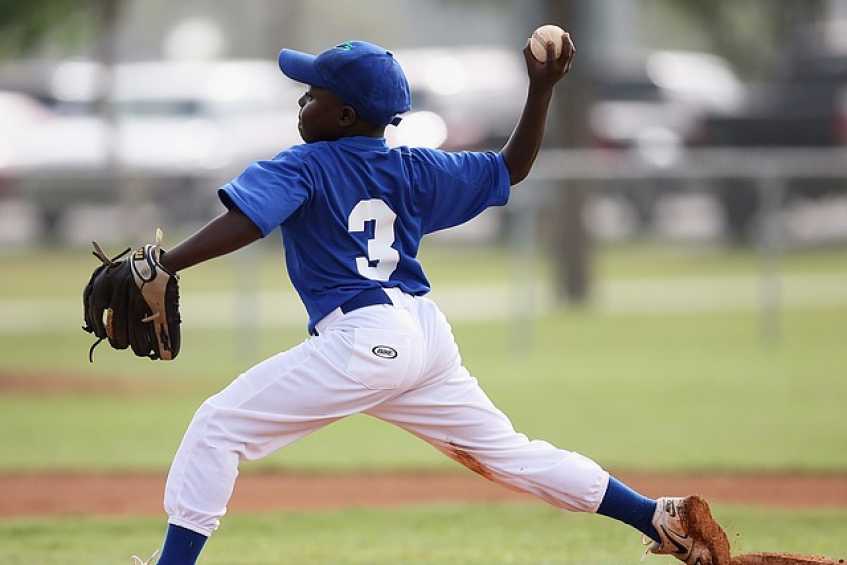
WHIP, or Walks and Hits per Inning Pitched, is a statistic used in baseball to measure a pitcher's effectiveness in preventing opposing players from reaching base. It is calculated by adding the total number of walks and hits a pitcher allows and dividing that number by the total number of innings a pitcher pitched. This gives the average number of walks and hits a pitcher allows per innings pitched.
WHIP is often used as a key indicator of a pitcher's ability to control the game, and a lower WHIP is generally considered to be better. In a typical Major League Baseball game, a WHIP of 1.3 or lower is considered to be good, while a WHIP of 1.0 or lower is considered to be excellent.
In addition to measuring a pitcher's overall effectiveness, WHIP can also be used to compare pitchers with different innings pitched ratios. For example, a pitcher who throws 100 innings and has a WHIP of 1.0 may be more effective than a pitcher who throws 200 innings and has a WHIP of 1.2. By taking into account the number of innings pitched, WHIP can help provide a more accurate assessment of a pitcher's performance.
Understanding WHIP in baseball is important for evaluating the overall performance of a pitcher. To best understand WHIP, it's helpful to have a solid understanding of other related baseball statistics, such as ERA.
ERA, or earned run average, is another key statistic used to evaluate a pitcher's effectiveness. It measures the average number of runs a pitcher allows per nine innings. In combination with WHIP, ERA can provide a more complete picture of a pitcher's performance.
Innings pitched ratio is another important statistic that can help to provide context for a pitcher's WHIP in baseball. This ratio compares the number of innings a pitcher has pitched to the number of innings the team has played. For example, a pitcher who has pitched 100 innings in a 162-game season would have an innings thrown ratio of 100/162. By taking into account the number of innings a pitcher pitched, a pitcher's WHIP can be more accurately evaluated, and comparisons can be made between pitchers with different innings pitched ratios. Ultimately, a combination of these baseball statistics can help provide a comprehensive understanding of a pitcher's performance.

Walks and hits can only be made by the pitcher, while errors allow the batter to hit the home plate if the defense acts wrongly. This would not happen to a pitcher. The WHIP statistic used when evaluating the pitching ability is mainly to count what an individual pitcher has control of. For example a player cannot control a fielder's error hence cannot be counted on their performance. It's a common statistical statistic used by fantasy baseball for exactly the same reason. The pitchers can count statistics. True MLB fans understand that stats like wins are not the best method for judging how good a pitcher is.
For baseball stats, WHIP (Walks per Innings Pitched Ratio) is one of the easiest to calculate and uses only simple formulas or hard numbers. In fact, there's basically the exact same formula: walk/hits / innings pitched. The total innings that a pitcher pitched is measured using their innings of work combined with their strikeouts and allowing a total strike. Statistics are generally written on either a decimal point or a decimal place. The equation, albeit very easy to understand, says: (hits + walks)/Innings Pitched.
Results will vary from baserunners. WHIP is used purely to hit & run. Generally the ball hits an unrecovered player. Batters reaching base by fielding errors are not measured. In addition, base runners are not measured if the fielders' decisions have been taken. The WHIP does not show the total bases a pitcher gives up. For example a single double triple or homer is considered WHIP hits. Similarly, when you have pitchers who give up very much walks and pitchers who give up many triples, it'll likely have the same WHIP.
The formula for calculating WHIP pitchers carr or a pitchers WHIP is:
WHIP = (Walks + Hits) / Innings that are Pitched
For example, let's say a pitcher has pitched 50 innings and has allowed 35 hits and 20 walks in that time. To calculate their WHIP, you would add the number of hits and walks they've allowed (35 + 20 = 55) and then divide that by the number of innings they've pitched (50). The pitcher's WHIP would be:
WHIP = 55 / 50 WHIP = 1.1
Therefore, this pitcher has a WHIP of 1.1, which is considered to be a good WHIP in baseball. It's important to note that WHIP can be calculated for individual games, as well as for entire seasons or other time periods.

WHIP is an indicator for the success of pitchers. The pitch score is not as reliable as the statistics it provides. In fact WHIPs are a very useful indicator of a pitcher's success. Putting less runners at base increases the chances of success. The WHIP and ERA can help evaluate pitchers for better performance.
In baseball, a good WHIP is typically considered to be anything below 1.30. However, what is considered a good WHIP can vary depending on the era, league, and other factors.
Generally, a lower WHIP is indicative of a better pitcher, as it means they are allowing fewer batters to reach base via walks or hits. For example, a pitcher with a WHIP of 1.00 for a complete baseball season is generally considered to be excellent, and just a handfull in the majors achieve that, while a pitcher with a WHIP of 1.20 is considered good and likely ranks among the best WHIP pitchers in the league. On the other hand, a pitcher with a WHIP of 1.40 or higher is generally considered to be struggling, as they are allowing a high number of batters to reach base.
It's important to note that WHIP is just one of many statistics used to evaluate a pitcher's performance, and it should be considered in combination with other metrics such as ERA, strikeouts, and innings they pitched. Additionally, context is important when evaluating a pitcher's WHIP, as factors such as the strength of the opposing team's batting lineup, the ballpark where the game is being played, and the quality of the pitcher's defense can all influence the statistic.
WHIPs are linked to the win. With less baserunners, your team will score more goals. If you reduce how many runs other players run you increase the probability that they win. If you have pitchers with less WHIP that shows that the pitcher controls them. When your pitcher possesses an extremely high WHIP they may walk or give up a hit because of the lack of control. The WHIP system does not account for fields of error or offensive outputs. That would be very effective for the pitcher, but an ineffective defensive system.

Best WHIP Pitchers of All Time
There have been many great pitchers in Major League Baseball (MLB) history who have achieved impressive WHIP numbers. Here are a few of the best all-time best WHIP pitchers in MLB history:
Addie Joss - 0.968 WHIP: Addie Joss played for the Cleveland Naps from 1902-1910 and had an incredible career WHIP of 0.968. Joss was known for his pinpoint control and is still considered one of the greatest pitchers of all time with one of the lowest WHIP ever recorded.
Ed Walsh - 1.000 WHIP: Ed Walsh played for the Chicago White Sox from 1904-1917 and is another pitcher who had outstanding control, as evidenced by his career WHIP of 1.000.
Pedro Martinez - 1.054 WHIP: Pedro Martinez played for several teams throughout his career, including the Montreal Expos, Boston Red Sox, and New York Mets. Pedro Martinez had a career low WHIP of 1.054, which is one the best of any modern-era pitcher.
Clayton Kershaw - 1.001 WHIP: Clayton Kershaw has played for the Los Angeles Dodgers since 2008 and has a career WHIP of 1.001. He has won multiple Cy Young Awards and is widely considered one of the best pitchers of his generation.
Mariano Rivera - 1.000 WHIP: Although he was a relief pitcher rather than a starter, Mariano Rivera had an outstanding career WHIP of 1.000. He played for the New York Yankees from 1995-2013 and is considered one of the greatest closers of all time.
Pitching with a lower ERA (Earned Run Average) is due to giving up huge hits. Big hits like extra base hits on the home run. What's the difference? How can I make a pitcher give up one run a game? These three runs per game may have come from home runs, which means big hits. Usually such situations are an exception. All pitchers who average WHIPs over 1,500 average an ERA between 2.00 – 2.05 - an outstanding whip stat. A good MLB ERA ranges from 1.00 to 3.00. WHIP statistics for baseball range from 1.75 - 1.25 points.
The exact origin of the WHIP (Walks and Hits per Inning Pitched) statistic in baseball is not entirely clear, but it is generally believed to have been popularized by baseball statistician and historian John Thorn.
Thorn is a renowned baseball historian and author who has written extensively on the history and statistics of the game. He has been credited with coining or popularizing a number of baseball terms and statistics, including "saves" and "ERA+". However, he has also noted that the idea of using a ratio of walks and hits allowed to total innings pitched was likely not a novel concept, and may have been used by baseball analysts and writers before he started using it in his own work.
Regardless of its exact origin, WHIP has become a widely recognized and commonly used statistic in baseball, and is now a standard part of many advanced pitching metrics used to evaluate pitcher performance.
The league average WHIP in Major League Baseball (MLB) can vary from season to season, but a good estimate for the average over the past several years is around 1.30.
In the 2021 season, the MLB average WHIP stat for pitchers was 1.24, which was slightly lower than the 2019 and 2020 seasons. This means that the average MLB pitcher allowed approximately 1.24 walks plus hits per inning pitched during a baseball game in the 2021 season.
Does WHIP include hit batters?
No, WHIP does not include a hit batter. WHIP only takes into account walks & hits allowed by the pitcher and not hit batters.
A hit batsmen, or hit by pitch (HBP) is a separate statistic that tracks the number of times a pitcher hits a batter with a pitch. While HBP can have an impact on the game, it is not factored into WHIP, as it does not directly contribute to a batter reaching base.
Does Fantasy Baseball Use WHIP?
Yes, fantasy baseball often uses WHIP as a statistic to evaluate the performance of individual pitchers. WHIP is commonly used in many fantasy baseball formats as it provides a simple and easy-to-understand way to measure a pitcher's ability to prevent baserunners. In fantasy baseball, WHIP is often used in combination with other pitching statistics such as ERA, strikeouts, and wins to create a more comprehensive picture of a pitcher's value.
Many fantasy baseball leagues also use WHIP as a category in their scoring system, with points awarded to teams based on their pitchers' WHIP performances throughout the season. Some leagues may also include WHIP as part of a pitcher's overall rating or ranking, which can help owners make informed decisions when drafting players and a winning team.
Chris Sloan is a former baseball league commissioner and travel baseball coach who has made significant contributions to the sport. In 2018, he founded selectbaseballteams.com, a website that helps parents find youth and travel baseball teams in their local areas. Since its launch, the website has experienced impressive growth, offering a wealth of resources including teams, news, tournaments, and organizations. Chris's unwavering passion for baseball and his innovative approach to connecting parents with quality baseball programs have earned him a respected reputation in the baseball community, solidifying his legacy as a leading figure in the world of youth and travel baseball.
There are 0 comments on "In Baseball What is WHIP? Walks And Hits Per Inning Explained"
chandler allen says:
"Hi my name is chandler, i’ve enjoyed..."
On Wanting to tryout for summer ball. as an 18 year old
david graham says:
"With no current MLB team in Canada,..."
On With no current MLB team in
Charles Chavez says:
"To All Coaches: Do you have13U or..."
On Looking for Games